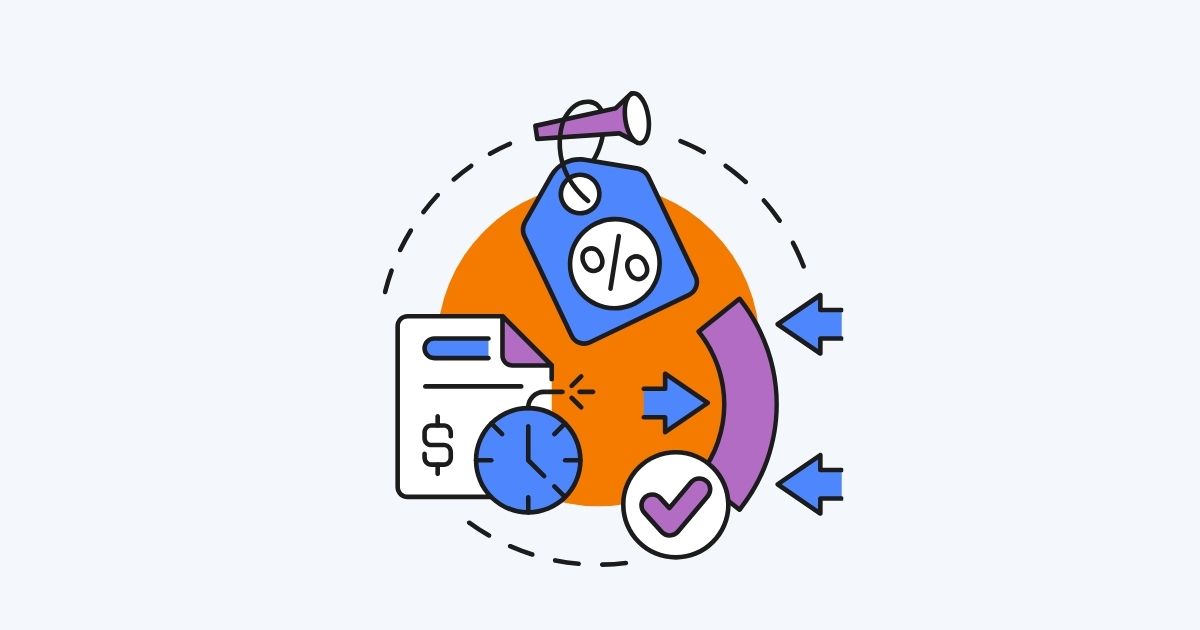Call Center Studio’s cloud call center software gauges service and product quality using key performance indicators (KPIs).
First Call Resolution (FCR) measures the percentage of the client’s first call resolution rate. This helps lower callbacks and improves customer satisfaction and agent efficiency. Another is customer satisfaction (CSAT), which measures customer satisfaction rates through surveys. CSAT insights help you make the necessary changes to boost customer loyalty, brand reputation, and sales.
Then, we have the Net Promoter Score (NPS), which measures customer loyalty and potential referrals. The one we’ll talk about in this piece is Average Handle Time (AHT).
AHT means the average time an agent uses to resolve a client inquiry. To calculate AHT, divide the total time spent handling calls by the total number of calls. The total duration spent on calls includes talk, hold, and after-call work.
A low AHT percentage means good service; a high AHT means something needs adjustments. We’ll discuss this further later on in the piece.
But first, why is AHT important in a call center?
Let’s find the answer to this question and how Call Center Studio can help.
Why is AHT Important In The Customer Service Industry?
Measuring AHT is essential because it highlights how successful a customer service initiative is. Some of the significant reasons you must measure AHT include:
Boosting agent productivity: Reducing call-handling durations in customer service boosts agents’ productivity. With reduced call handling durations, agents have more time to pick up more calls and resolve issues. This increases the agent’s productivity while simultaneously improving customer satisfaction rates.
Cost Reduction: The customer service industry incurs many costs, from software to training. Lowering AHT rates translates to more calls handled per agent, reducing the overall customer service costs.
Better Resource Allocation: Knowing how AHT affects business operations helps you better allocate company resources.

What is AHT in a call center?
Average handle time in a call center is the average time call agents utilize to offer customers solutions. Modern platforms offer automated average handle time AHT calculators to get accurate calculations. As we’ve mentioned earlier, if you get high AHT numbers, you ought to do something about it.
Below are the strategies to improve AHT:
Empowering Agents
The foremost strategy for lowering AHT numbers is to empower agents with valuable information. You can achieve this by first putting them through comprehensive training programs. Introduce topics like product knowledge, communication skills, troubleshooting, compliance, and company policies.
Beyond training, develop comprehensive knowledge bases with elementary solutions to common inquiries. You can use quick reference guides an agent can access to solve client inquiries.
Another way to empower agents is by implementing customer relationship management tools, CRMs. Ensure the agents are proficient at operating these platforms to access caller details and personalize the call. Some valuable details include customer history, account details, and other relevant information.
Streamline After-Call Work
You can also reduce AHT rates by automating post-call tasks. Average handle time AHT examples of these tasks are generating responses or sending surveys. Also, sending confirmation emails and other resources. Setting these systems accords agents time to focus on other tasks rather than these.
Voice recognition and speech analytics tools help populate call summaries based on customer sentiments. This technology allows you to uncover common issues and trends, enabling proactive problem-solving.
Optimize Call Routing and Flow
You can optimize call routing and workflow using an Interactive Voice Response (IVR) system. IVR systems automate tasks like directing callers to qualified agents and other resources. These redirections allow the best-qualified agents and resources to solve the issue. This reduces time wastage on call holding or transfers.
Promote Efficient Communication:
Your agents need to advocate active listening. Instead of rushing to answer a client, train them to ask follow-up questions before offering help. This mode of operation indicates that they want to fully grasp a customer’s concern before jumping on an answer. This close attention to detail approach limits the need for later callbacks and clarifications.
You can also implement script usage to promote uniformity of communication across the board. This consistency in service delivery encourages first-contact resolution, reducing callbacks.
Continuous Monitoring and Improvement
Another strategy to improve average handle time is call recording and performance reviews. Use these data sources to identify areas of improvement through peer or other forms of coaching.
Giving your agents candid feedback goes a long way toward lowering their AHT numbers. Recognizing and rewarding their efforts further reinforces positive AHT numbers.

What is The Industry Standard For AHT?
The answer to “What is a good average handle time AHT?” is that it depends.
One company’s AHT numbers may not meet the needs of another. This is because external factors like industry, customer expectations, and call complexity have a role to play. For example, you cannot expect a call center offering payment solutions to have the same AHT numbers as a software company. The latter might have longer call times because issues sorted are technical.
So, in essence, a one-size-fits-all AHT number doesn’t exist.
Nonetheless, lower AHT numbers mean higher efficiency.
To find accurate AHT calculations, you may use:
- Average handle time AHT calculator available online.
- Industry benchmarking insights from other customer service companies.
- Analyzing the data you’ve collected in your own company over time.
What is The Standard Handling Time?
The standard handling time, also known as SHT, is a time estimate agents use to solve specific client queries. This figure is usually pre-determined, and you use it for internal benchmarking and agent coaching.
What is the Average Ticket Handling Time?
The average ticket handling time is the average time to resolve a service ticket. Some contact centers instruct their clients to raise tickets so that they can have the best-qualified agent call them back with answers.
What is the AHT Ratio?
The calculator AHT formula divides the total call handling time by the total talk time. A higher AHT shows that agents spend more time on hold and after-call work than solving issues through conversations.
A lower AHT ratio is a positive indicator. It indicates that agents solve issues through conversations and spend less time holding or handling post-call work.
Lower AHT Numbers and Boost Company Efficiency
Lowering AHT ratios isn’t rocket science; you must be intentional about it.
Begin by empowering agents and streamlining call routing and after-call workflows. Activate automation and IVR systems for your cloud call center software here. Next, work on improving communication and continuously monitoring and improving contact center operations.
Doing the above will help you lower AHT numbers and boost company efficiency. Contact Call Center Studio today to help you implement these strategies for your contact center.




